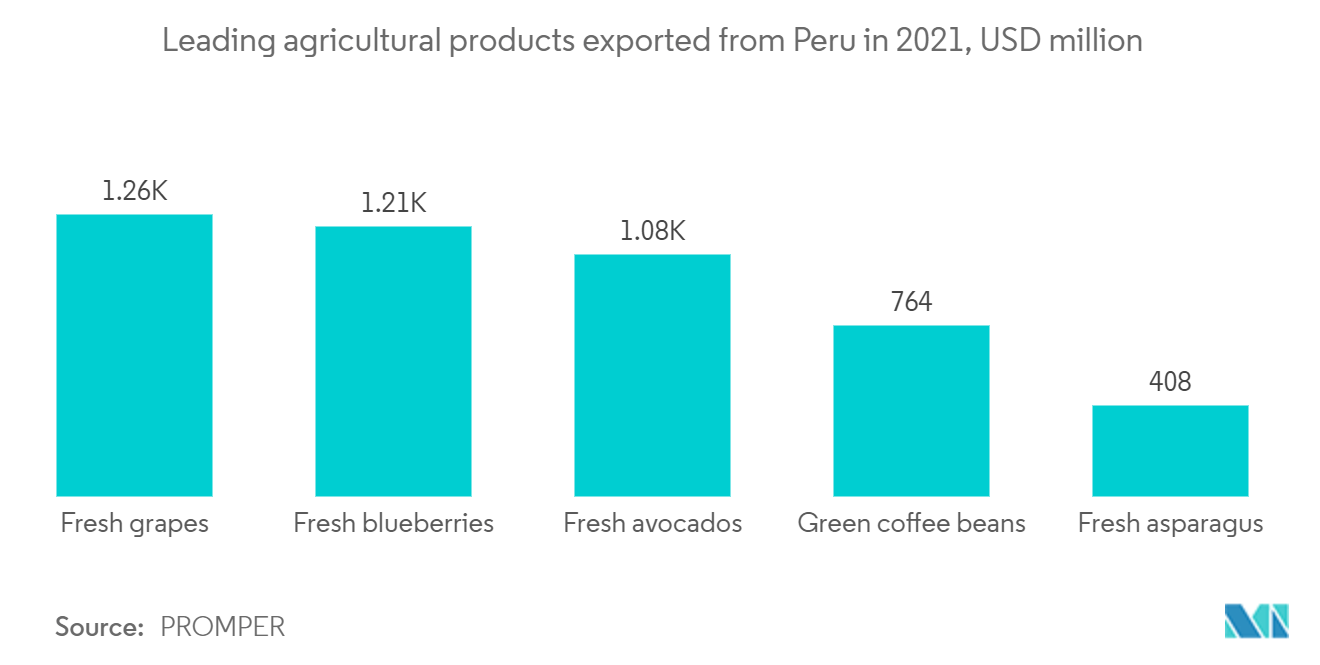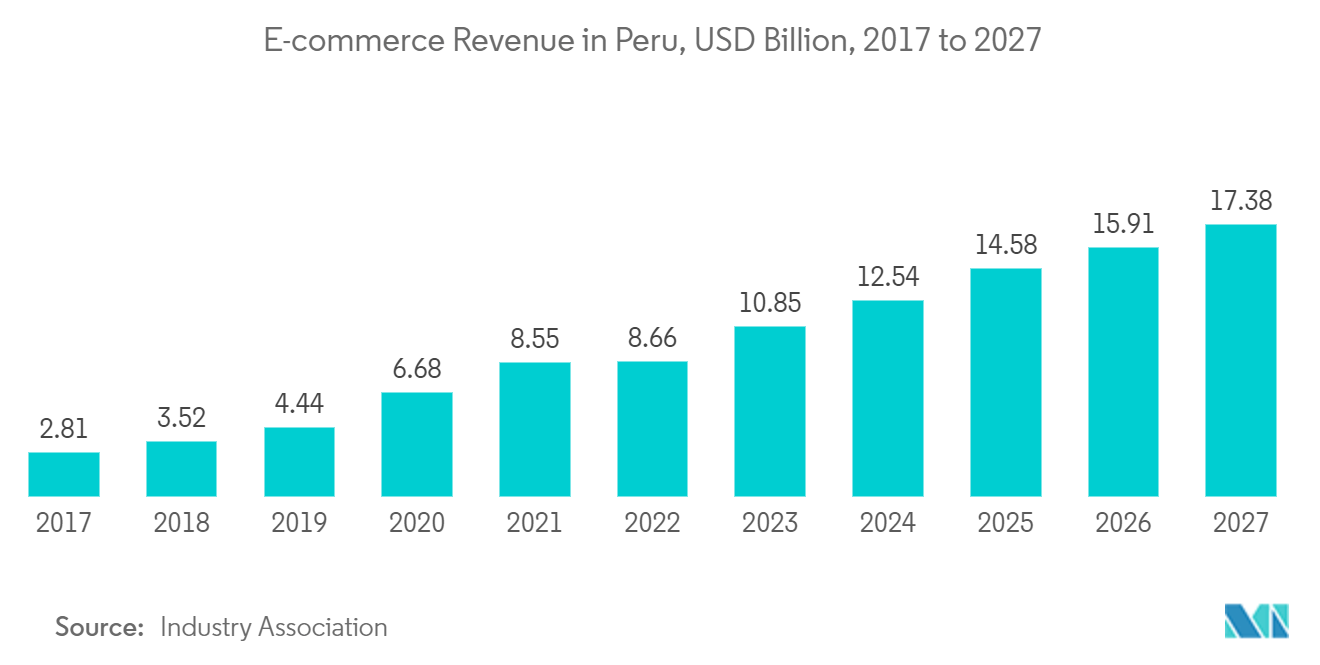Market Trends of Peru Freight and Logistics Industry
Agricultural Exports Driving Logistics Growth
Peruvian agricultural exports climbed from USD 645 million in 2000 to a projected USD 9.2 billion in 2021. This exceptional achievement is attributable to favorable weather in the coastal region of Peru, investments in cutting-edge technology, and wise policies, such as the Special Labor Regime for Agriculture legislation.
Peru increased its production land used for high-value exports by a factor of four to approximately 200,000 hectares. The industry generates about four direct jobs in the field and one in the processing facilities per hectare. So Peru generated at least one million formal jobs. Additionally, the Act opened up job prospects for women, who make up roughly 25% of the workforce.
Agro exports are the second currency generator for Peru. Since 2000, its export figures experienced an exponential increase. Fresh fruits, specifically grapes, blueberries, and avocados, were Peru's top agricultural export in 2021. With an estimated USD 1.3 billion export value that year, grapes came out on top. Avocados came in third with USD 1.1 billion in exports, followed by fresh blueberries with USD 1.21 billion. In the meantime, the Andean nation exported green coffee worth USD 764 million. Peru is one of Latin America's biggest producers of coffee.

Ecommerce Is Growing in the Country
eCommerce is still accelerating its strides in the digital transformation of consumers and businesses two years after the COVID-19 epidemic. The Peruvian Chamber of eCommerce (CAPECE) 2021-2022 Ecommerce Observatory Report observed 55% growth in 2021 and generated USD 9.3 billion in revenue.
Only 1.5% of Peru's 5.2 million officially registered enterprises sold goods online before the outbreak. In contrast, businesses joining the eCommerce sector doubled throughout the pandemic, and by the end of 2021, over 6% of all sales were made online. However, more work in the Peruvian company environment is still pending regarding digital transformation and eCommerce solutions. For instance, just 20% of internet transactions originate in regions other than Lima.
Toys, DIY, & hobbies, homeware & furniture, health & beauty, airlines and hotels, and Electrical Goods rounded up the top five eCommerce market share leaders in Peru in 2021. The top two segments hold a combined market share of 22%.
Credit cards, which account for 35% of the USD 9.3 billion in online sales in Peru, are the most popular payment method, followed by debit cards (33% of the market), digital wallets (22%), bank transfers (7%) and cash (3%) transactions. While mobile payment apps like Venmo and PayPal are yet to gain popularity, Yape, their equivalent in Latin America, is quickly taking over.
Due to the COVID-19 epidemic, consumers had to adjust to new procedures for making purchases of goods and services. Even though shopping malls are once again at capacity, more businesses are offering eCommerce because Peruvian shoppers want convenience and comfort when they shop.
Free delivery, coupons or discounts, recommendations from other customers, and straightforward return policies are the key factors that influence consumer preference for online retailers. ECommerce became an essential tool for small, medium, and large businesses.
According to a recent CAPECE analysis, Peru includes the lowest smartphone e-commerce usage rates among the major Latin American economies. But in 2021, 59% of all eCommerce purchases were made on mobile devices. Furthermore, according to the same report, 34.2 million cell phones in Peru are frequently used by 62% of Peruvians to access the internet on mobile devices in Peru.


